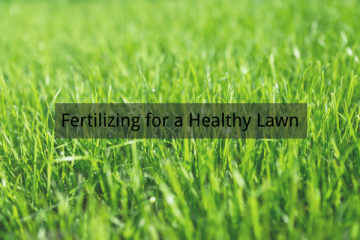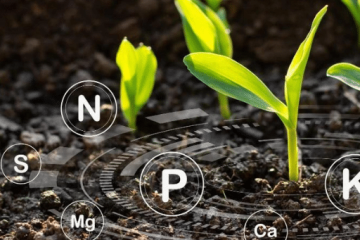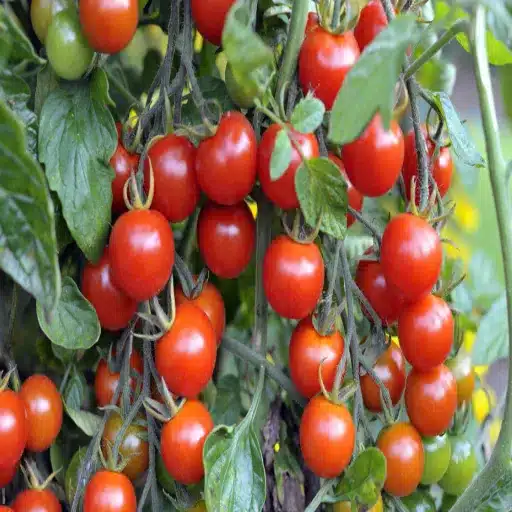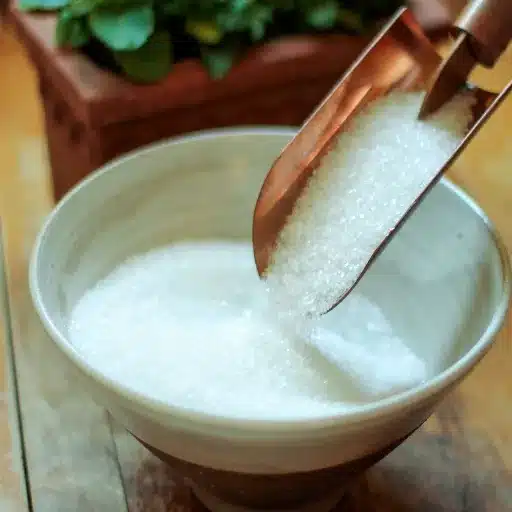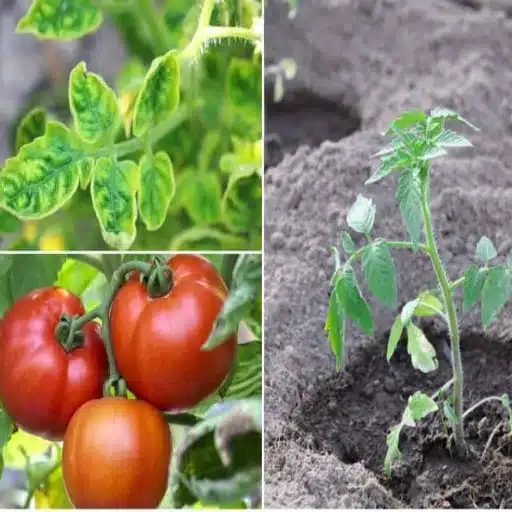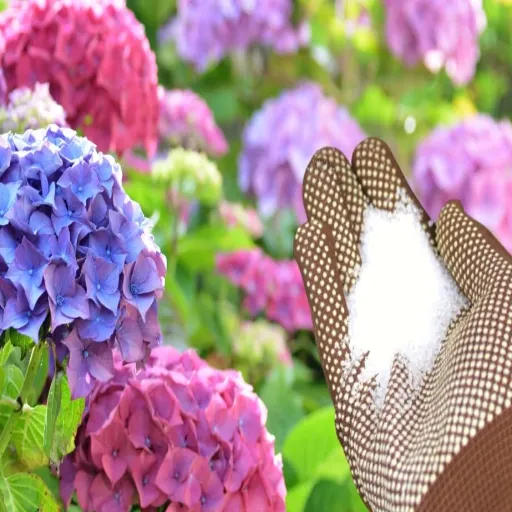The gardener’s best friend all over the world is the tomato plant, not only for their tasty fruits but also for the joy of having them in the garden. Nonetheless, the tomato plants’ health and yield often depend on the exact amount of nutrients. Epsom salt is one of the natural elements that a lot of gardeners trust. However, determining the right amount and using it the right way are the questions. The present guide is going to look at Epsom salts’ role in helping tomato plants grow better by way of different methods, like increasing the absorption of nutrients, and also fighting off the most common deficiency. No matter if you are a veteran grower or just a beginner in the gardening world, this article will equip you with the know-how to let your tomato plants flourish.
Introduction to Epsom Salt and Tomato Plants
Common Challenges in Tomato Plant Care
There are a few challenges that come with gardening, and one of the challenges is growing tomatoes. Tomato plants can be highly sensitive to various factors, the most common ones being the lack of nutrients, pest problems, and improper watering. One of the main problems caused by these stress factors is the yellowing of leaves, which is frequently linked to insufficient magnesium or too much water. Although these conditions may not be noticeable at first, they will eventually lead to slow growth and low fruit output.
Using Epsom salt as a Magnesium supplement is a good solution for the nutrient deficiency problem. Mixing one tablespoon of Epsom salt with a gallon of water and pouring it on your plants every few weeks can keep the yellowing leaves off and can also increase the uptake of nutrients. Still, testing the soil beforehand to check for magnesium deficiency is very important before applying Epsom salt. Adding it unnecessarily may disrupt the balance in the soil.
On the other hand, among the most significant challenges are the pests like aphids, whiteflies, and hornworms. If you inspect your plants regularly and apply organic solutions like neem oil or introducing beneficial insects, you could keep the pests at bay and even manage them. Along with that, proper watering and good mulching around your tomato plants will protect them from moisture-related issues like root and blossom-end rot, which are caused by inconsistent water levels. By managing these issues early, you will be able to enjoy your tomatoes all season long.
Importance of Epsom Salt in Gardening
Epsom salt, which is made up of magnesium sulfate, is an important thing when it comes to plant health and growth. Magnesium which is one of the main components of Epsom salt is very important for photosynthesis, the process that plants use to convert sunlight into energy. Epsom salt being a direct source of magnesium can boost the chlorophyll production in plants thus giving them greener leaves and more energy.
Epsom salt’s one other major benefit is that it can enhance the absorption of nutrients in plants. Plants require a number of nutrients like nitrogen, phosphorus, and potassium in order to be healthy and grow. The magnesium contained in Epsom salt helps in the uptake of these nutrients from the soil, thus assuring that your plants turn out to be healthier and stronger. This is particularly true for crops such as tomatoes, peppers, and roses which are usually dependent on magnesium more than other substances.
Apart from nutritional values, Epsom salt can also be a great help in common gardening problems. For example, magnesium deficiencies can be corrected by using Epsom salt but they are usually characterized by yellowing leaves with green veins. A mixture of Epsom salt in water can be sprayed directly onto leaves as a correction of the deficiency or poured into the soil as a preventive measure. The use of Epsom salt in your gardening activities can assist you in being proactive with regard to plant health and consequently, you will have beautiful and vigorous growth.
Benefits of Epsom Salt for Tomato Plants
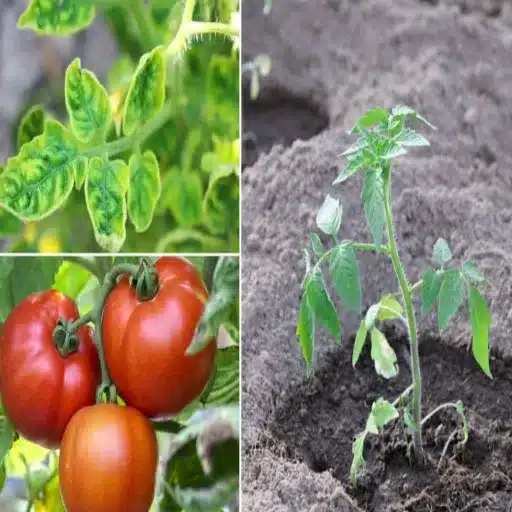
Understanding Magnesium Deficiency in Tomato Plants
Magnesium is a major factor in the health and productivity of tomato plants. The nutrient is absolutely necessary for photosynthesis because it is a constituent that forms the central atom of the chlorophyll molecule. When tomato plants experience a shortfall of magnesium they lose their growth and yield of the latter. Some of the main characteristics and indications of magnesium shortage in tomatoes are as follows:
- Chlorosis Interveinal: The magnesium deficiency manifests itself earliest in the yellowing of older leaves between the veins or ‘interveinal’ while the veins themselves continue to look green.
- Curling or Drooping of Leaves: The unhealthy plants may show their condition by developing curled or droopy leaves as the situation gets worse.
- Dropping of Leaves Prematurely: The plants which are suffering from magnesium deficiency severely may lose their leaves prematurely and thus decrease the capability of the plant to perform photosynthesis.
- Fruits which are not Well Developed: Magnesium-deficient tomato plants usually produce smaller and less developed fruits which affects the whole harvest.
- Loss of Resistance to Stress: The plants that lack magnesium can be easily affected by the environmental stresses like drought or extreme temperature which further hinders their growth.
It is very important to detect magnesium deficiency as early as possible in order to keep the tomato plants healthy and to have a good crop yield. Regular monitoring of the plants for any signs of the deficiency and the use of Epsom salt as a supplement can prove to be very effective in restoring magnesium levels.
How Epsom Salt Affects Growth and Fruit Production
The use of Epsom salt as a magnesium supplement for tomato plants can lead to a substantial increase in their growth and fruit output. Here are five principal impacts of introducing Epsom salt into your gardening practice:
- Еnlarged Chlorophyll Production: Magnesium in Epsom salt is an indispensable part of chlorophyll molecule structure. Increased chlorophyll production elevates overall plant metabolism hence stronger and healthier plants.
- Highly Nutrient Available: Epsom salt is very effective in the absorptive of crucial micronutrients like nitrogen and phosphorus. This enhanced nutrient availability assures plants get a balanced supply of nutrients needed for optimal growth.
- Tag on Fruit Quality: The reason behind magnesium is the transfer of energy and the enzymatic reaction in the functioning of the plant. Consequently, the application of Epsom salt makes the fruits of the plants larger, more brilliant in color, and better in taste.
- Lessening of Blossom-End Rot: Calcium imbalance in tomatoes due to magnesium deficiency can be a reason for blossom-end rot. Epsom salt helps maintain the plant’s magnesium level, thus reducing the occurrence of this disorder.
- Stress Resistance: Epsom salt boosts the plant’s ability to cope with stressful conditions by providing magnesium. This mineral aids the plants in enduring drought, heat, and pest invasions.
Periodical Epsom salt use for the tomato plants’ care can result in vigorous plants and increased harvests. To achieve the best outcome, use it in moderation like diluting one tablespoon in one gallon of water and then applying it as a foliar spray or soil soak every two to four weeks.
Addressing Yellow Leaves and Blossom End Rot
The common problems tomato growers face are yellowing leaves and blossom end rot, but with proper care and attention to key factors, they can be resolved most of the time. Below are five points to deal with these problems in an effective way:
- Nutrient Deficiency: Yellow leaves are a sign that the plant lacks nutrients, mainly nitrogen. Apply a balanced fertilizer frequently to keep the plants nourished. Calcium deficiency in the soil is usually the cause of blossom end rot; therefore, the use of calcium solutions or amendments such as crushed eggshells can be beneficial.
- Watering Practices: Both yellow leaves and blossom end rot can be caused by overwatering or inconsistent watering. Maintain a moisture level in the soil that is consistent, i.e., the soil should not be too dry or waterlogged. Water at the base of the plant early in the morning when the temperature is cooler to promote absorption.
- pH Levels: Nutrient absorption can be impaired by incorrect pH levels causing yellowing leaves or calcium deficiency. The pH range of 6.0 to 6.8 is the sweet spot for tomatoes which means slightly acidic soil. Testing your soil and making adjustments with lime or sulfur to maintain a proper pH is an important procedure.
- Pruning and Air Circulation: Fungal infections due to poor air circulation can manifest as yellowing of leaves. To facilitate air circulation around the plant and keep the aerial parts of plant dry, prune away the excess foliage, as this is the main control measure against fungal infections. Promptly removing affected leaves can also serve as a measure to prevent the problem from getting worse.
- Calcium Supplementation: When it comes to blossom end rot, applying calcium-rich solutions such as a foliar spray made from calcium nitrate can help mitigate the deficiency. Regular monitoring during the flowering and fruiting stages allows one to act quickly if symptoms appear.
These guidelines help tomato plants not only to recover from these problems but also to grow strong, thus, maintaining their beautiful leaves and producing plenty of fruits.
Dosage Recommendations for Epsom Salt
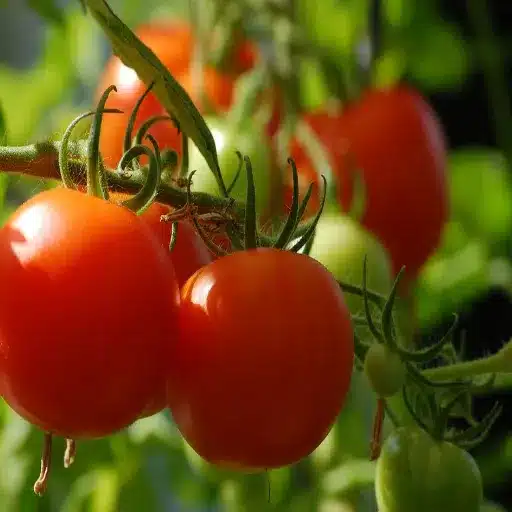
Recommended Amounts for Different Growth Stages
The optimal growth of tomato plants the Epsom salt’s amount must be modified according to the plant’s growth stage bra. The specific recommendations are as follows:
| Growth Stage | Dosage | Application Frequency | Purpose |
|---|---|---|---|
| Seedling Stage | 1 tablespoon per 1 gallon of water | Every week | Promote strong root development |
| Vegetative Growth | 1 tablespoon per 1 gallon of water | Every 2-3 weeks | Support photosynthesis and leaf production |
| Flowering and Fruiting | 2 tablespoons per 1 gallon of water | Every 3-4 weeks | Enhance flower production and fruit growth |
Soil testing should be performed every time to prevent over-dosing, which could result in a chemical imbalance in the soil. The right amount of Epsom salt combined with other fertilizers creates a nutrient-rich environment for healthy, high-yield plants.
Dosage for Various Tomato Plant Sizes
The proper amount of Epsom salt to be added can differ according to the size and stage of your tomato plants:
| Plant Size | Epsom Salt Dosage | Application Method | Frequency |
|---|---|---|---|
| Seedlings | 1 teaspoon per gallon of water | Apply sparingly around the base | Once every 4-6 weeks |
| Medium-sized Plants (18-24 inches tall) | 1 tablespoon per gallon of water | Pour at base or spray on leaves | Every 3-4 weeks |
| Plants on the verge of harvest | 2 tablespoons per gallon of water | Apply water mix at the base | Every 3 weeks |
Regular treatments with the correct dosages of Epsom salt allow tomato plants to take in all the necessary nutrients accurately for each of their growth phases. Regularly check the plants’ conditions, and do soil tests to find the right balance of nutrients and prevent possible deficiencies.
Signs That Indicate the Need for More Epsom Salt
Tomato plants regularly display evidence when they need the support by Epsom salt, the main volumetric magnesium and sulfur nutrients. The most prominent symptom is the yellowing of leaves just between-the-veins. This symptom is called interveinal chlorosis which usually indicates a magnesium deficiency plants having troubles in producing chlorophyll thus affecting photosynthesis and thus their growth in total. Disheartened leaves may be pale green and the color change usually affects lower leaves, older ones first.
Moreover, another symptom could be poor fruit development or floral production decrease. Magnesium is in fact, very important in the process of making fruits and flowers when it comes to nutrient and sugar movement throughout the plant. In turn, you might be able to see either smaller and less vibrant fruits, or fewer blooming. Also, plants might appear stunted or show slowly growing, the lack of magnesium will cause them to energy cycles and dives that metabolizing compounds quite hard for them.
Curling leaves or leaf edges that look scorched might be a sign of sulfur deficiency, even though sulfur deficiencies are quite rare in garden settings. Even tiny imbalances in magnesium or sulfur could block roots from developing and absorbing the nutrients from the soil. By monitoring these signs very closely and analyzing nutrient levels through soil testing, the gardeners will know exactly when to apply more Epsom salt, thereby keeping their tomato plants healthy and productive throughout every stage of growth.
Application Methods for Epsom Salt
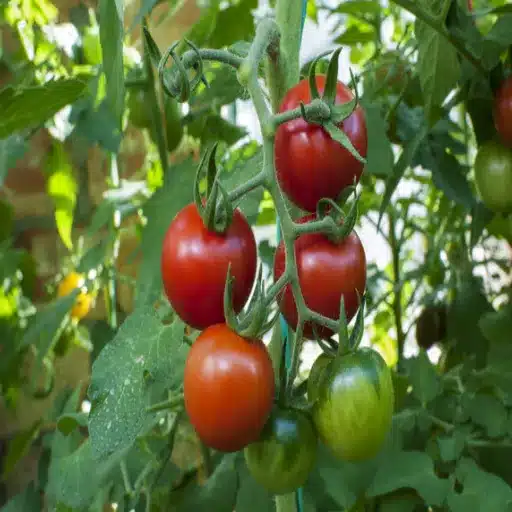
Foliar Spray: Best Way to Apply Epsom Salt
Applying Epsom salt as a foliar spray represents one of the most powerful techniques to deliver magnesium and sulfur directly to plants since the nutrients are very rapidly absorbed via the leaves. To attain the best results, the gardeners need to comply with certain rules and practices. The following are five main actions together with the particulars for making and using a foliar spray with Epsom salt:
- Prepare the Solution – Mix 1-2 tablespoons of Epsom salt into a gallon of water. This mixture is suitable for most plants and guarantees that the nutrients will not be too diluted or too strong.
- Use Proper Equipment – Transfer the mixture to a clean gardening sprayer or spray bottle. Make sure the device is not contaminated with any harmful substances, like plant-unfriendly chemicals or detergents, from prior usage.
- Spray in the Morning or Evening – The application of the foliar spray should take place in the early morning or late evening when the sun is not very strong. This helps to avoid possible leaf burning and gives the solution a longer time to stay on the leaves for absorption.
- Target the Undersides of Leaves – Direct the spraying towards the undersides of the leaves, as here stomata are denser. This is the area of the greatest efficiency in nutrient uptake.
- Repeat as Needed – The foliar spray can be reapplied every 2-4 weeks, depending on the plant’s size, the stage of growth, and signs of nutrient deficiency. Prevent overbrowsing, for too much magnesium can also interrupt the absorption of other soil nutrients.
Following these measures, gardeners not only will have Epsom salt but also be able to improve plant health through nutrient uptake.
Soil Drench: How to Apply Epsom Salt Effectively
Another great approach to improve plant health and to rectify magnesium shortcomings is to apply Epsom salt as a soil drench. The method consists of the dissolution of Epsom salt in water and then direct application to the soil, through which the roots are allowed to absorb the nutrients effectively. To get the best results, follow these steps:
- Right Dosage Determination – Mix about 1 tablespoon of Epsom salt to 1 gallon of water for most plants. For huge plants like mature vegetable, trees, or shrubs, you can indeed increase the strength of the solution up to 2 tablespoons per gallon.
- Best Time to Choose – Make the soil drench application either early in the morning or late in the afternoon when the air is cool so that there will not be rapid evaporation and the nutrients will be absorbed well by the soil.
- Application to be Done Evenly – Pour the solution evenly around the plant’s base but conditionally avoiding putting it directly on the leaves. This will guarantee that the root system has adequate access to the magnesium and sulfur coming from the Epsom salt.
- Application Frequency – Apply the soil drench every four to six weeks, depending on the plant’s requirements and the soil’s magnesium levels. Overapplication can result in nutrient imbalances so it is really necessary to keep an eye on the plant’s health.
- Keep Monitoring Soil and Plant Health – Regularly carry out soil pH checks and watch your plant’s growth patterns. Magnesium deficiency symptoms like yellowing leaves and bad fruit production might be an indication that more applications are needed, however, always keep the dosing moderate to uphold the nutrient balance.
By following these instructions, the gardeners will be able their plants to absorb the extra magnesium and sulfur, a situation that will result in healthier growth and higher harvests.
Pre-Planting Incorporation of Epsom Salt
The soil’s condition can be improved significantly with Epsom salt’s pre-planting incorporation to ensure the plants’ nutrient availability at the best level. Following are the five main steps and the detailed examples to keep in mind while putting Epsom salt before planting:
- Test Soil for Magnesium Levels: Before applying Epsom salt, a soil test should be performed to find out the levels of magnesium existing in the soil. Generally, the ideal levels of magnesium in the soil range from 1.5% to 3% of cation exchange capacity (CEC). Testing guarantees that Epsom salt is applied in the right amount and thus prevents over-fertilization.
- Calculate Correct Dosage: Depending on the specific needs of the plant for magnesium, apply 1 to 2 tablespoons of Epsom salt per square foot of soil. The right dosage decreases wastage and preserves the fertility of the soil.
- Mix with Soil Thoroughly: When sprinkling Epsom salt, incorporate it into the surface 6 to 12 inches of soil evenly. This mixing guarantees that the magnesium and sulfur will be in the soil ready for the roots as soon as they start to grow.
- Water the Soil After Application: Thoroughly water the soil after Epsom salt has been shared out; this is to aid in crystal dissolution. This makes the nutrients more available to the plants as well as being absorbed more by the soil.
- Repeat for Specific Crops: There are certain crops like tomatoes, potatoes, and roses that greatly benefit from Epsom salt. Customizing your applications to suit conditions and needs of the selected plant species being cultivated will be the right way to go.
Following these steps, gardeners can optimize soil conditions and create a healthy foundation for robust plant growth.
Risks and Misconceptions about Epsom Salt
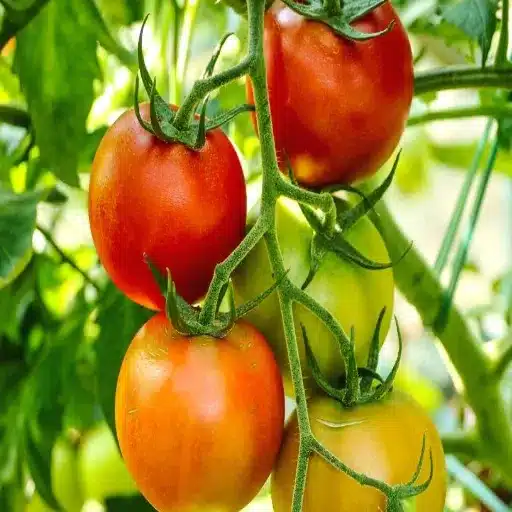
When Not to Use Epsom Salt on Tomato Plants
In my opinion, the application of Epsom salts for the tomato plants should be limited to specific nutrient deficiencies such as magnesium and sulfur. I have noticed that applying Epsom salts left and right or to an extreme can actually do more harm than good. For example, using too much Epsom salt might create a nutrient imbalance in the soil which would hinder the absorption of other essential elements like calcium or potassium that are crucial for the overall healthy growth of the plant and the development of the fruit.
Besides, I have come to realize that if your soil already contains a lot of magnesium, it would be best not to use Epsom salt. This is because the addition of more magnesium in such situations is not only unnecessary but could also stunt the growth of the plants. I never miss soil testing—this way, I can tell what exactly is lacking in the soil before making amendments. Without this information, I might harm my plants by applying the wrong nutrient.
Moreover, the application of Epsom salts to tomato plants that are affected by blossom end rot can be a waste of the salt. Blossom end rot is usually due to a lack of calcium not a deficiency of magnesium. I have to keep reminding myself that using Epsom salt in this case wouldn’t rectify the issue and may even worsen it by further complicating nutrient absorption. Instead, using the right supplements to increase the calcium levels has been the answer in such situations.
Common Misunderstandings About Epsom Salt Usage
⚠️ Myth #1: Epsom Salt is a Complete Fertilizer
A common myth about Epsom salt is that it acts as a fertilizer for all plants. The truth is the salts of magnesium and sulfur—Epsom salt’s main ingredients—are one of the necessary micronutrients for plant growth; however, they will not be able to provide the whole nutrient profile by themselves. The excess use of Epsom salt in the soil which is already high in magnesium can upset the nutrient balance leading to the shortage of calcium or potassium, the two elements which are most important for the health of the plants.
⚠️ Myth #2: Epsom Salt Repels Pests
Moreover, some of the gardening fans recommend using Epsom salt as a pest control solution, which is based on the belief that it keeps off slugs and other garden pests. However, there is no scientific evidence to support this assertion and ineffective pest control is one of the caused consequences of using Epsom salt in this manner. Not only that but it may also cause magnesium in the soil to be unnecessarily high.
It is very important to be aware of the particular requirements of your plants and soil when using Epsom salts. One of the most important steps in ensuring the right use of any amendment, including Epsom salt, is doing a soil test before the application. The compound can be beneficial in treating magnesium-deficient soil, but its usage should always be planned and based on sound evidence rather than common gardening myths.
Potential Risks of Over-Application
⚠️ Soil Nutrient Imbalance
The extensive usage of Epsom salt in gardening can create a number of unfavorable consequences, which often completely destroy the intended benefits of the product. One serious concern is the soil nutrient imbalance that may happen. The excess magnesium, caused by the continued application of Epsom salt, can cause a major disruption in the nutrient uptake of other nutrients, like calcium and potassium, which are also very important for the healthy growth of plants. This unfavorable condition will show up in different ways, such as yellowing leaves, stunted growth, or poor fruit development, and will eventually come to affect the plant’s overall vitality.
⚠️ Environmental Concerns
Furthermore, the usage of Epsom salt beyond the limit can create environmental problems, especially in areas that are prone to runoff. The magnesium that is in high concentration in the soil may wash away into water bodies, thus causing the disruption of aquatic ecosystems by changing the water’s chemical composition. Such contamination can kill fish and other aquatic animals and make the water unfit for drinking, which again brings out the point that Epsom salt should be used sparingly and only when necessary.
⚠️ Misdiagnosis and Improper Treatment
Lastly, it is good for the gardeners to be careful not to take Epsom salt as a magic-all solution for the problems associated with plants. Mistakenly diagnosing the problems and treating them with Epsom salt can lead to the plants suffering more rather than the issue getting solved. To avoid these hazards, it is very important to do soil tests, keep a close eye on the health of the plants, and use Epsom salt only in situations where it has been confirmed that the plants will benefit from receiving magnesium. This kind of approaching makes sure that the gardening is done in a sustainable way, gives the plants and the environment around them a chance to remain healthy in the long run.
References
- PlantVillage by Penn State University
Is it a good idea to put Epsom salts on to tomato plants?
This source provides practical advice on the appropriate amount of Epsom salt to use for tomato plants. - North Dakota State University Extension
The Epsom Salt Myth
This article debunks common myths about Epsom salt and its effects on tomato plants. - Washington State University Extension
Epsom salts
A detailed PDF discussing the use of Epsom salts, including its impact on magnesium deficiency in tomato plants. - University of Minnesota Extension
Coffee grounds, eggshells and Epsom salts in the home garden
This source explains when and why Epsom salts might be unnecessary or even harmful. - Clemson University Home & Garden Information Center
Epsom Salt in the Garden—Is it truly needed?
This article discusses the benefits and potential downsides of using Epsom salt in gardening, including for tomatoes. - Click here to read more.
Frequently Asked Questions (FAQ)
Q: How much epsom salt to use for tomato plants?
A: In general, gardening professionals advise to use a tablespoon of epsom salt for each foot of height of your tomato plants. Also, for very big plants, you may sprinkle a cup of epsom salt to the soil at the plant’s base.
Q: How does Epsom Salt assist my tomato garden?
A: Epsom salt can be a boon to your tomato garden as it introduces the critical minerals of magnesium and sulfur to the plants. These minerals are the basis for developing healthy plants, helping plants to take in the nutrients more efficiently and moreover, branding growth.
Q: When should I apply epsom salt to my tomato plants?
A: Epsom salt application is opportune at the time of planting tomatoes or with the first days of the growing season. Another way to go about this is to sprinkle it around your tomato plants every other week throughout the growing period to ensure that the magnesium levels are kept healthy.
Q: Can I add epsom salt to the soil before planting?
A: Certainly, priming the soil with epsom salt before planting can be a way of preparing the ground for your tomato plants. If you want to be certain, run a soil test to see if there is a lack of magnesium in your soil; if this is the case, then mixing in epsom salt will correct the problem.
Q: What is the best way to dissolve epsom salt for tomato plants?
A: The best way around this is to dissolve epsom salt in water before applying it to the soil as it will then be easier for the plant roots to absorb the nutrients.
Q: Can I use table salt instead of epsom salt for my tomato plants?
A: No, using table salt with tomato plants is out of question as it is unhealthy for the plants. Epsom salt has magnesium in it which is good for the plant, on the contrary, table salt affects the plant by raising sodium levels which can be detrimental.
Q: How do I know if my soil needs epsom salt?
A: You can find out whether your soil requires epsom salt by doing a soil test. Should the test reveal a shortage of magnesium, then the application of epsom salt would be beneficial for your tomato plants.
Q: Will applying epsom salt improve the flavor of my tomatoes?
A: Definitely, the use of Epsom salt will increase the sweetness and juiciness of tomatoes since it will also be easier for the plants to get nutrients. Generally, healthy tomato plants are the ones that give the best-tasting fruits.
Q: Is there a risk of excessive use of epsom salt on tomato plants?
A: There is indeed a risk of nutrient levels in the soil getting unbalanced due to overuse of the salt. Thus, adherence to stipulated guidelines and constant checking of your plants to see if they are getting the right nutrient amount will help you avoid over-application.
💚 Happy Gardening! May your tomato plants thrive and produce abundant, delicious fruits! 🍅

